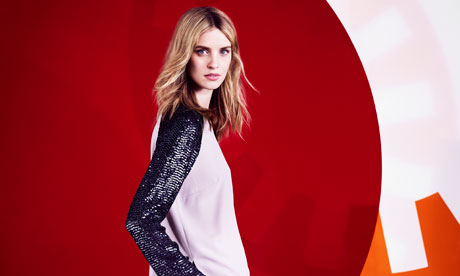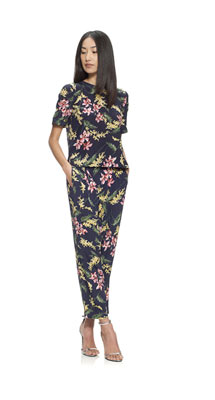
Whistles conquers the 'middle market' of British womenswear
Whistles: The 'gradual and subtle' building of a high street brand Photograph: Whistles
While Marks & Spencer announced a 6.8% drop of general sales last month, another corner of the British high street has been quietly flourishing. Whistles, the clothing brand set up by Lucille Lewin in the 1980s, announced this week that it had bought back the majority of its shares from the Icelandic government, a move which has underlined its growing strength.
Whistles, which has been independent since parting ways with the retail group Mosaic in 2008, has gone from strength to strength despite a tough economic climate. Sales were up 13% in 2011 and there was "consistent double digit like for like sales growth," this year, according to a company statement. Whistles is also the bestselling premium high street brand on Asos, the online retailer. It had been part-owned by the Icelandic government since the banking crises of 2008, when shares owned by the collapsed bank Glitnir were transferred to its ownership. Now Reykjavik owns less than 10% of the retailer after buy-back funds were raised from exisiting Whistles shareholders. European and American expansion is a key part of the company's future strategy, with 20 more UK-wide stores planned for the next two years.
 Whistles Wisteria pyjamas proved a huge hit with British women Photograph: Whistles
Whistles Wisteria pyjamas proved a huge hit with British women Photograph: Whistles
This success is largely due to Jane Shepherdson, the influential retail visionary who became chief executive at Whistles, after eight years as brand director at Topshop, in 2008. Bringing a large part of her team with her, it was an appointment that saw fashion pay attention to a brand which, at the time, was unremarkable. As Shepherdson herself says, "there were frills, bows, extra buttons... quite fussy. I needed to change the brand. It was quite a risky thing to do but it wasn't an aesthetic that we understood."
Since then, the clothes have gradually gained a recognisable slickness. Classic shift dresses in vibrant prints, tailored sportswear pieces and suiting that looks cool rather than conventional is now Whistles' fare. Stacey Duguid, Elle's executive fashion editor, calls Shepherdson "the Phoebe Philo of the high street", comparing the understated mood of Whistles clothing to that of the Celine designer. This, says Duguid, appeals to a savvy customer. "The Whistles woman is urban," she says. "She wants to look a little different without being glaringly obvious or looking like she's trying too hard."
New ranges have also been introduced, first footwear, and now Limited, a collection of luxury pieces which hits stores in early September 2012. But it's not a complete overhaul; Shepherdson's effect has slowly shown itself over the four years she has been at the brand. Caren Downie, womenswear director at Asos, credits "the quality of the product and strong fashion handwriting" as integral to its success. "You didn't notice any massive changes," adds Graeme Moran, junior fashion editor at Drapers. "It was very gradual and subtle."
Shepherdson's reign has seen Whistles become a middle market store with real high fashion clout. The press day to show the autumn/winter collections this year was attended by a who's who of London fashion names and front row stars such as Caroline Issa and American Vogue's Sarah Mower regularly mix the label with their designer pieces. Several of Whistles' designs have become 'it' items – the pleated Carrie skirt from last year, and the Wisteria pyjamas and Wren pink suit this summer.
Along with fashion's approval, there is a growing celebrity following which has spurred the brand on. The Duchess of Cambridge is the most high profile supporters, wearing a Whistles blouse in her official engagement photographs, and the Bella pattern blue shift for the Olympics closing ceremony earlier this month. Shepherdson, who now owns 20% of Whistles, is the first to admit this will help them in new markets. "Our profile is growing (abroad) because of women like her wearing our clothes," she says. "We have good website sales from the US now." Moran, for one, can't see overseas expansion being a problem. "They're on a par, if not better than our other high street brands," he says. "Shepherdson has made the brand directional but commercial – everyone can wear it."
No comments:
Post a Comment